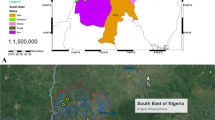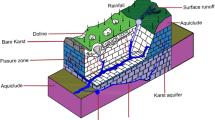Abstract
A novel and practical approach for predicting unprecedented flood events caused by heavy rainfalls at drainage pumping stations in lowland areas is proposed and examined. This method combines a deep neural network (DNN) coupled with a physical model and transfer learning (TL). To predict unprecedented flood events, the DNN was initially pre-trained using virtual flood data generated by a physical model. Subsequently, the pre-trained DNN was fine-tuned using observed data from the target field. Using approximately 7.5 years of data at 1 h intervals, including large flood events, we investigated three cases with 1000 virtual flood datasets generated by the pseudo-rainfalls of 100, 300, and 500 mm/72 h. After sufficient fine-tuning, the case of rainfall of 300 mm/72 h demonstrated superior performance in predicting the water level for the largest flood event (caused by approximately 300 mm/72 h), which was not included in the training data during the fine-tuning process. Additionally, we evaluated the impact of the amount of the virtual flood data on the prediction accuracy was evaluated to reduce computational costs and manpower. The results indicate that the fine-tuned DNN requires at least 250 virtual flood datasets to achieve a higher accuracy than a simple DNN (i.e., without the physical model and TL) that relies solely on observed data.













Similar content being viewed by others
References
Baylor D, Breck E, Cheng H-T, Fiedel N, Foo CY, Haque Z, Haykal S, Ispir M, Jain V, Koc L, Koo C, Lew L, Mewald C, Modi A, Polyzotis N, Ramesh S, Roy S, Whang SE, Wicke M, Wilkiewicz J, Zhang X, Zinkevich MA (2017) TFX: a tensor flow-based production-scale machine learning platform. In: Proceedings of the 23rd ACM SIGKDD international conference on knowledge discovery and data mining, pp 1387–1395. https://doi.org/10.1145/3097983.3098021
Geisser S (1993) Predictive inference: an introduction, vol 55. Monographs on Statistics and Applied Probability. Chapman & Hall, New York, p 240
Hitokoto M, Araki T, Nakagawa K (2014) Accuracy improvement of flood forecasting model using artificial neural network for inexperienced flood. Adv River Eng 20:373–378 (in Japanese)
Hitokoto M, Sakuraba M, Sei Y (2016) Development of the real-time river stages prediction method using deep learning. J Jpn Soc Civ Eng Ser B1 (Hydraul Eng) 72(4):I_187-I_192. https://doi.org/10.2208/jscejhe.72.I_187. (in Japanese)
Hochreiter S, Schmidhuber J (1997) Long short-term memory. Neural Comput 9(8):1735–1780. https://doi.org/10.1162/neco.1997.9.8.1735
Hu C, Wu Q, Li H, Jian S, Li N, Lou Z (2018) Deep learning with a long short-term memory networks approach for rainfall-runoff simulation. Water 10(11):1543. https://doi.org/10.3390/w10111543
Kao I-F, Zhou Y, Chang L-C, Chang F-J (2020) Exploring a long short-term memory based encoder–decoder framework for multi-step-ahead flood forecasting. J Hydrol 583:124631. https://doi.org/10.1016/j.jhydrol.2020.124631
Kimura M, Okumura N, Azechi I, Takano Y, Yoshikawa N (2019a) Examination of the effect of preliminary operation of drainage pumping stations on the reduction of inundation damage inside low-lying agricultural area. J Jpn Soc Civ Eng Ser B1 (Hydraul Eng) 75(2):I_1309-I_1314. https://doi.org/10.2208/jscejhe.75.2_I_1309 (in Japanese)
Kimura N, Nakata T, Kiri H, Sekijima K, Azechi I, Yoshinaga I, Baba D (2019b) Water level prediction at drainage pump stations in low lands using LSTM model. J Jpn Soc Civ Eng Ser B1 (Hydraul Eng) 75(2):I_139-I_144. https://doi.org/10.2208/jscejhe.75.2_I_139 (in Japanese)
Kimura M, Ishikawa T, Okumura N, Azechi I, Iida T (2020) Examination of short-term water level prediction model in low-lying lakes using machine learning. J Jpn Soc Civ Eng Ser B1 (Hydraul Eng) 76(2):439–444. https://doi.org/10.2208/jscejhe.76.2_I_439 (in Japanese)
Kimura N, Yoshinaga I, Sekijima K, Azechi I, Baba D (2020b) Convolutional neural network coupled with a transfer-learning approach for time-series flood predictions. Water 12(1):96. https://doi.org/10.3390/w12010096
Kimura N, Minakawa H, Fukushige Y, Kimura M, Baba D (2021a) Water level predictions in a drainage pumping station using a deep learning model, coupled with a physical model and a transfer learning approach. J Jpn Soc Civ Eng Ser B1 (Hydraul Eng) 76(2):I_319-I_324. https://doi.org/10.2208/jscejhe.77.2_I_319 (in Japanese)
Kimura N, Yoshinaga I, Sekijima K, Azechi I, Kiri H, Baba D (2021b) Recurrent neural network predictions for water levels at drainage pumping stations in an agricultural lowland. Jpn Agric Res Q 55(1):45–58. https://doi.org/10.6090/jarq.55.45
Minakawa H, Azechi I, Kimura M, Okumura N, Kimura N, Baba D (2020) Utilization of simulated data for development of a deep learning flood prediction model as support of drainage pump operation. J Jpn Soc Civ Eng Ser B1 (Hydraul Eng) 76(2):I_349-I_354. https://doi.org/10.2208/jscejhe.76.2_I_349 (in Japanese)
Minakawa H, Masumoto, T (2015) Estimation of climate change impacts on flooding in low-lying paddy areas in Japan. In: The USCID 8th International Conference on Irrigation and Drainage (Proceedings), Reno, Nevada, USA, 2–5 June, 2015. https://www.uscid.org/_files/ugd/43071b_4f977f7c14fb4aa1b1cc242689fcb3e5.pdf. Accessed 30 Apr 2023
Moriasi DN, Gitau MW, Pai N, Daggupati P (2015) Hydrologic and water quality models: performance measures and evaluation criteria. Trans Am Soc Agric Biol Eng 58(6):1763–1785. https://doi.org/10.13031/trans.58.10715
Pratt LY (1992) Discriminability-based transfer between neural networks. In: Proceedings of the advances in neural information processing systems, vol 5, Colorado. https://proceedings.neurips.cc/paper/1992/file/67e103b0761e60683e83c559be18d40c-Paper.pdf. Accessed 27 Jan 2023, 30 November–3 December, pp 204–211
Tabari H (2020) Climate change impact on flood and extreme precipitation increases with water availability. Sci Rep 10(1):13768. https://doi.org/10.1038/s41598-020-70816-2
Yoshikawa N, Miyazu S, Yasuda H, Misawa S (2011) Development of inundation analysis model for low-lying agricultural reservoir. J Jpn Soc Civ Eng Ser B1 (Hydraul Eng) 76(4):991–996. https://doi.org/10.2208/jscejhe.67.I_991 (in Japanese)
Acknowledgements
We greatly appreciate the research grants from the JSPS-KAKENHI (JP21K05838) and the MITSUBISHI Foundation as well as the helpful advice on the DNN model improvement by Mr. Yuya Kino (the ARK Information Systems, Japan) and on the physical model by Dr. Natsuki Yoshikawa (Niigata University).
Author information
Authors and Affiliations
Corresponding author
Ethics declarations
Conflict of interest
The authors declare that they have no conflicts of interest regarding the contents of this manuscript.
Rights and permissions
Springer Nature or its licensor (e.g. a society or other partner) holds exclusive rights to this article under a publishing agreement with the author(s) or other rightsholder(s); author self-archiving of the accepted manuscript version of this article is solely governed by the terms of such publishing agreement and applicable law.
About this article
Cite this article
Kimura, N., Minakawa, H., Kimura, M. et al. Examining practical applications of a neural network model coupled with a physical model and transfer learning for predicting an unprecedented flood at a lowland drainage pumping station. Paddy Water Environ 21, 509–521 (2023). https://doi.org/10.1007/s10333-023-00944-8
Received:
Revised:
Accepted:
Published:
Issue Date:
DOI: https://doi.org/10.1007/s10333-023-00944-8




